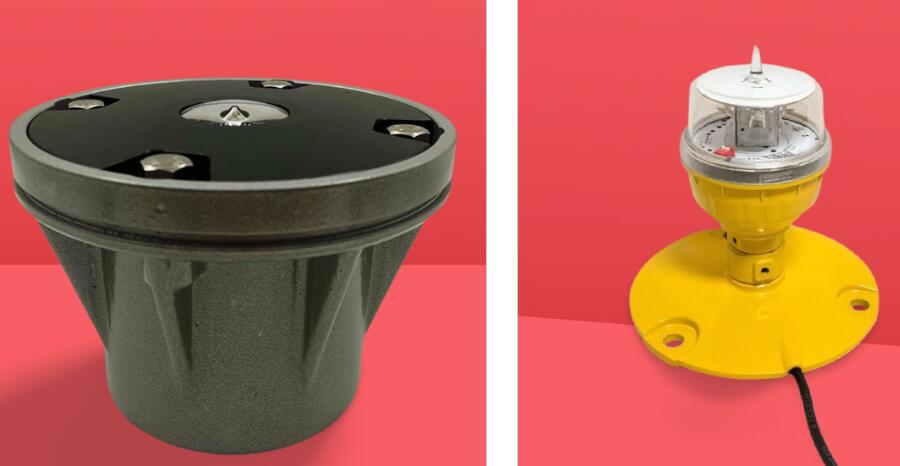The Silent Sentinels: How Helicopter Pad Lights Ensure Safety in the Skies
In the vast, interconnected web of modern aviation, the humble helicopter pad is a critical nexus. It is the point where the dynamic world of rotary-wing flight meets the static earth, a transition that is both complex and perilous. Guiding this delicate operation are the unassuming yet vital helicopter pad lights. More than just simple illuminations, these systems form a sophisticated language of light, communicating essential information to pilots and ensuring that every landing and takeoff is executed with precision and safety. Their role, often overlooked by the casual observer, is fundamental to the entire ecosystem of vertical aviation.
The primary function of helicopter pad lights is to provide unambiguous visual guidance. Unlike fixed-wing aircraft, helicopters operate in a three-dimensional space, often approaching landing zones from various angles and in challenging conditions. The standard configuration of these lights creates a highly visible, unmistakable target. Typically, perimeter lights outline the designated landing area, defining its boundaries with clarity. This is crucial for spatial awareness, especially at night or in low-visibility conditions like fog or heavy rain. A central circle or "H" symbol, also illuminated, provides a definitive aiming point for the pilot, ensuring the aircraft is centered correctly on the pad.
However, the language of these lights extends far beyond simple outlines. One of the most critical components is the lighting system that indicates wind direction. Known as a wind cone or windsock, it is invariably illuminated at night. A pilot must always land and take off into the wind to maintain optimal control and lift. A brightly lit wind cone provides an immediate, at-a-glance understanding of current wind conditions, allowing for last-second adjustments during the final approach. This simple yet effective tool is a cornerstone of landing safety.
For operations in extremely poor visibility, more advanced helicopter pad lights incorporate elevated or frangible floodlights. These are strategically positioned to wash the entire landing area in light without creating glare for the approaching pilot. This eliminates shadows that could mask hazards and ensures the ground crew and any equipment are clearly visible. Furthermore, to aid pilots in judging their rate of descent—a critical factor in avoiding hard landings—many systems include visual approach slope indicators (VASIs). These specialized lights use a color-coded system (often red/white) to tell the pilot if they are on the correct glide path, too high, or too low. This functionality is indispensable for approaches over featureless terrain or water.
| helicopter pad lights |
The technological evolution of helicopter pad lights has been significant. Modern systems increasingly utilize Light-Emitting Diodes (LEDs). LED technology offers profound advantages: dramatically lower energy consumption, a vastly longer lifespan, and superior brightness and reliability compared to traditional incandescent or halogen bulbs. This makes them ideal for remote helipads where maintenance access is difficult and power may be from solar-charged batteries. The robustness of LEDs ensures the lighting system remains operational with minimal intervention, a key factor for emergency medical service (EMS) pads or offshore oil rigs.
| helicopter pad light |
The application of these lighting systems highlights their immense value. On hospital rooftops, the piercing glow of helicopter pad lights signals a lifeline for critical patients. Every second saved in a safe, swift landing can mean the difference between life and death. In these high-stress environments, the reliability of the lights is non-negotiable. Similarly, on the helidecks of maritime vessels, lights must guide pilots onto a moving, pitching platform amidst the darkness of the open ocean. Here, the lighting system is integrated with the ship’s navigation to create a stable visual reference in a profoundly unstable environment.

Beyond the technology itself, the strategic placement and maintenance of these lights are governed by strict international and national aviation regulations, such as those from the International Civil Aviation Organization (ICAO) and the Federal Aviation Administration (FAA). These standards dictate everything from light intensity and color to the specific arrangement patterns, ensuring universal comprehension by pilots worldwide. This standardization is vital; a pilot approaching a pad in Tokyo must instinctively understand the same visual cues as one landing in London or Los Angeles.
Helicopter pad lights are far more than mere airport aesthetics. They are a sophisticated, reliable, and absolutely essential safety system. They form a silent, luminous dialogue between the ground and the air, conveying vital data on position, alignment, wind, and descent. As helicopter operations continue to expand into new frontiers, including urban air mobility and unmanned aerial vehicle deliveries, the principles and technology of these lighting systems will only grow in importance. They are the silent sentinels of the sky, ensuring that every journey aloft concludes with a safe and secure return to earth.
